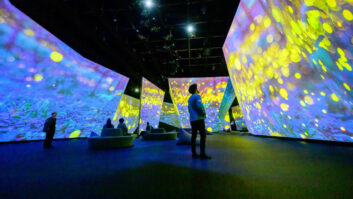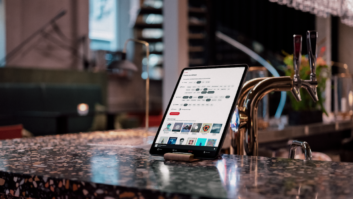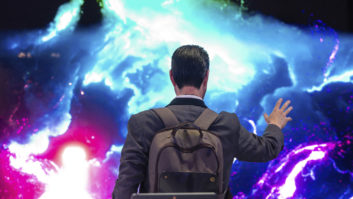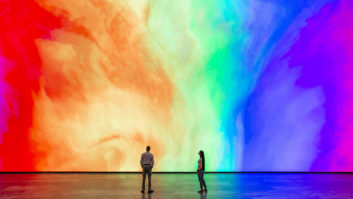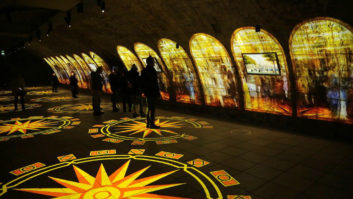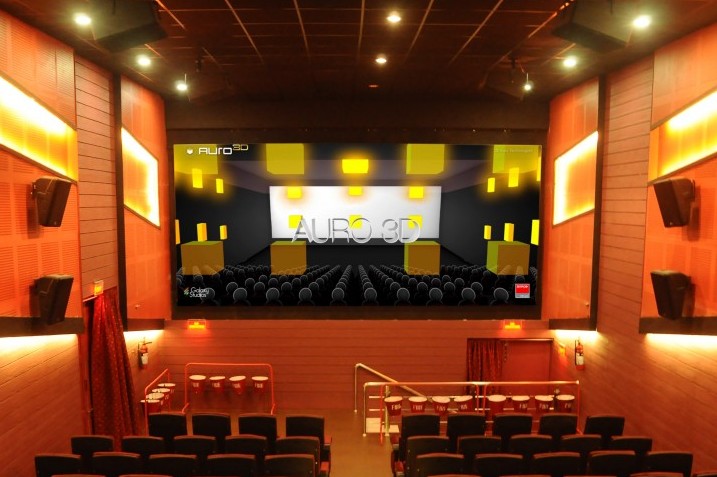
With immersive audio the subject of much media buzz recently, Installation offers this breakdown of some of the main immersive/3D solutions. David Davies reports.
Arguably leading the field at the moment in terms of media attention alone, Dolby Atmos adopts an object-oriented approach to audio as opposed to a channel-centric one. For filmmakers, this means that “any sound heard in a film scene is an audio object, for example a helicopter taking off or a child crying”, explains Jonathan Jowitt, evangelist content and e-media solutions, Dolby Laboratories. For public and home cinema owners, there is the opportunity to deploy far more speakers than would be possible with a standard 5.1 or 7.1 channel-based system; for cinemas, up to 64 independent speaker outputs can be achieved, while in the home 7 to 34 speakers may be brought into an Atmos system.
“With Dolby Atmos, you have amazing flexibility: the format provides even richer, more detailed sound by rendering to overhead or height speakers and/or to more than seven speakers at the listener level,” says Jowitt. The number of partner products incorporating Dolby Atmos is growing, and as Jowitt notes, “an object audio renderer can be found in every Dolby Atmos-enabled receiver or pre-processor. The Dolby Atmos renderer decides exactly which speakers to use to create multidimensional sound and faithfully recreate what the original sound designer or filmmaker intended.”
Also making waves in the immersive audio world is Auro Technologies’ Auro-3D format. Founded upon award-winning Belgium-based Galaxy Studios, Auro Technologies claims to deliver ‘surround sound with height’ with the Auro-3D format, which embodies a hybrid approach. “Auro-3D is using both the channel- and object-based approach,” says Auro Technologies’ CEO, Wilfried Van Baelen, “but in a different way than our competitors, in order to first create the most natural immersive sound experience in a channel-based solution and then use object-based technology for interactivity and to further define more spot point sources in the hemisphere.”
Van Baelen goes on to highlight what he regards as several notable points of difference, including the definition of a “vertical stereo field” in all Auro-3D speaker layouts (“the good news is that the Auro-3D speaker layouts can playback all competitive formats but not the other way around”) and the inclusion of Auro-Codec, enabling the creation of multiple mix masters in one single PCM stream without the need for extra bandwidth.
“This means that, for example, the PCM carrier is not only the 5.1 mix, but contains all information for all the Auro-3D masters,” he says. “Consumers who don’t have an Auro-3D device hear the normal 5.1 mix exactly as intended by its creators in high-resolution audio, but consumers who do have the Auro-3D system with the Auro-3D decoder – which is part of the Auro-3D engine in each Auro-3D processor – will hear the same Auro-3D mix as created in the studio with high-resolution audio in each channel of the Auro-3D system.”
Established in 2004, Germany-based Iosono Sound has undoubtedly proven to be one of the most influential forces in immersive audio – and its aforementioned recent acquisition by Barco certainly won’t harm its global profile. The current Iosono offer incorporates a ‘toolchain’ for production (Spatial Audio Workstation), distribution (Iosono Container + Master Files) and reproduction (the Iosono Core hardware processor, which is described as the ‘heart’ of Iosono’s 3D sound systems).
Iosono, explains Barco senior director strategic business development entertainment Brian Claypool, is “designed for object-based audio [but will] support channel-based audio as well. Speaker layouts can be designed flexibly for a specific purpose and venue, [and] a full 360º system is possible.”
One of the longest-established players in the immersive sound field, Datasat Digital Entertainment was formed in 1991 and began to attract widespread attention after its digital audio system was used during production of Steven Spielberg’s box-office smash, Jurassic Park. Originally engineered for 5.1 surround sound, Datasat Digital Sound technology has developed to improve the quality of surround sound to 7.1 and 11.1.
Datasat recently announced a link-up with Dolby that will see the Datasat RS20i home cinema processor made available with Dolby Atmos. Indeed, cross-company collaboration has proven to be unusually common in this area of endeavour; for example, Barco holds an exclusive licence to the Auro 11.1 technology, while Datasat worked closely with Barco and other organisations involved in the Auro-3D project to develop the AP24-3D 24-channel audio processor. Barco’s purchase of Iosono will surely affect the sector in ways that have yet to become fully clear.
Focused firmly towards the museum, theatre and installed space in general, Out Board UK’s TiMax SoundHub is another animal again, providing source/speaker matrixing and spatialisation scaleable from 16 x 16 up to 64 x 64 sizes (inputs/outputs). Explaining TiMax SoundHub’s distinctive niche, Haydon explains: “Its unique delay-matrix function and object-based virtual pan objects allow it to enhance both existing conventional surround formats, such as 5.1/7.1, as it does for the NASA Atlanta Space Shuttle exhibit at Kennedy Space Centre, and also create dynamic spatialisation soundscapes entirely, as it does for Disney’s Aladdin musical on Broadway, which has around 200 loudspeakers.” The system, he notes, combines playback, 3D spatialisation, show control, sound system distribution and management in one box.
www.auro-3d.com
www.barco.com
www.datasatdigital.com
www.dolby.com
www.iosono-sound.com
www.outboard.co.uk

